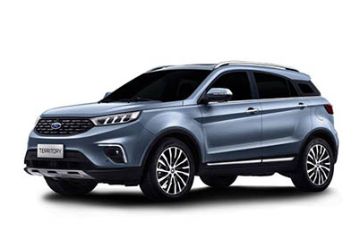![When the floodwaters rise: What to do and not to do when driving through a flood 01]()
The recent effects of both Typhoon Paeng and Typhoon Queenie have brought back haunting memories of one of the worst natural disasters to hit Metro Manila – Typhoon Ondoy.
It was a rough time to be a car owner – cars were flooded or even completely submerged in just a few hours of rain, and there was nothing to do except scrap them because no one had any idea what to do to save them from the damage.
Paeng and Queenie had less of an impact because people learned what to do in those scenarios. But the recent Low-Pressure Area-induced rains have made flooding an immediate risk. If you're still in the dark about what to do when floods loom, then perhaps finding your way to this article was a sign from the universe.
Do – Remove your battery terminals
![When the floodwaters rise: What to do and not to do when driving through a flood 02]()
Your car is a highly electrified piece of machinery filled with technology, and every piece of that tech is susceptible to water damage. The best way to mitigate that damage is to remove any electricity that’s powering those components, and the fastest way to do that is to cut the power at its source – the battery. Removing the battery automatically cuts off power to the most crucial systems, potentially saving you tens of thousands in repair bills.
Do – park in flood-free zones
![When the floodwaters rise: What to do and not to do when driving through a flood 01]()
After Ondoy, one of the surprising things to happen is that malls have started informing people that they are waiving parking and overnight fees for people who want to be assured that their cars are parked in places that are flood free. It may be slightly chaotic because everyone’s trying to get their cars into the parking lots, but it’s better than scrapping your vehicle thanks to rising floodwaters, right?
Aside from that, try to learn where the nearest high point in your area is. You should evacuate if you live in a catch basin, especially when you hear that a strong storm is coming and will hit the Philippines within the next 48 hours.
DON’T – Try to drive through high floodwaters
![When the floodwaters rise: What to do and not to do when driving through a flood 02]()
If you need to drive through a flooded area, keep in mind one simple rule: An engine’s intake must remain dry.
More often than not, a vehicle’s Engine Control Unit or ECU is found inside the cabin (some have it in the engine bay), but the engine still needs to take in air to combust, so there is an intake that allows it to breathe. This intake is usually close to the front of the vehicle, where it can get the most air – near the headlights.
Remember, your hard limit for driving into a flood should be that the water shouldn’t even touch your headlights.
DON’T – Stop in the middle of floodwaters
If you’ve decided that the only solution is to risk the flood, then drive through it; once you do, don’t stop whatever you do. One of the things that help when crossing a flood is the bow wave, a wave motion that keeps the water from splashing too far over your hood and possibly entering your intake and the cabin. This bow wave pushes water ahead of you, making a small valley where your cabin usually is. Maintaining an average of 5 kilometers per hour while wading through is a good way of maintaining the bow wave.
DO – Dry out your brakes once you get across
![When the floodwaters rise: What to do and not to do when driving through a flood 03]()
Once you’ve made it across the floodwater, you can safely drive forward. But before you get back up to speed, you should dry out your brakes, as they’re less effective after being immersed in water.
Drying your brakes happens when you step on the brake pedal. So effectively, the first thing you should do after getting up to about 10 kilometers per hour is gently to tap your brakes 4 or 5 times. That should eliminate any water on your brake rotors so that you have effective brakes when you need them.
![When the floodwaters rise: What to do and not to do when driving through a flood 04]()
Last but certainly not least, try to avoid driving during a storm. Unless it’s to find shelter, evacuate, or grab essentials, any driving should probably be put off until after the storm has passed. Staying safe is the top priority, after all.










